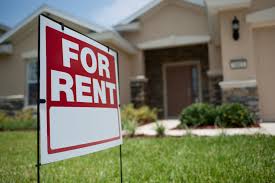A fair portion of the business that Kodiak Roofing does seems to come from rental properties. Whether it’s from one of the wonderful property managers we have built relationships with or a real estate agent representing an owner cashing in their rental property in today’s hot real estate market, we have been finding many costs that could have been avoided had someone had the right conversation with the investors in years prior.
As most Denver metro residents are becoming very aware, the one insurance claim a home owner is most likely to make is a hail claim. Following one of these crushing hail storms very many of these rental property owners come to us for their storm damaged roof replacement expecting their insurance to cover these costs. Unfortunately, we have seen the insurance coverage landscape change dramatically for many in the metro area and in particular for rental property investors, and find these policy coverages leaving investors standing with a much larger portion of their repair bills. One client that sustained severe damage from the September 29th, 2014 storm came to find that her rental property insurance coverage left her with out of pocket costs with a 1% deductible and policy exclusions for necessary components that she was responsible for 58% of the replacement bill. On your average roof replacement with her coverages that could have left her with $5000-$6500 in costs. Sadly this isn’t scenario is not a rare outlier for investors. More and more we are seeing these types of coverages because investor’s insurance agents aren’t properly informing their clients of what coverages an investor actually needs to obtain when purchasing an insurance policy. So what are these coverages you ask?
Well I’m glad you’ve kept reading to find out. There are certain insurance providers out there that will only write very minimal coverage policies for investor/rental properties. The first step we would recommend is contacting us so that we can connect you with an insurance broker who will write a policy that isn’t restricted to only writing policies with minimal coverages. From there we would recommend to work with these brokers and ask for a policy that includes the following:
- A specific hail/wind deductible amount (this deductible is very often different than your regular policy deductible) that is actually affordable for you that you could gather this amount in about 1-3 months time to pay for any repairs after a severe storm.
- Full replacement cost coverage (or RCV coverage). This is very important to have to ensure that if you are having repairs done to a part of your home that has lived most of it’s purposeful life, that your insurance doesn’t depreciate the value it’s condition so low that you end up stuck holding thousands of dollars in costs.
- Ordinance or law coverage (better known as code upgrade coverage). This endorsement covers the costs of repairs to bring up any parts of your home that have new building code requirements that were different than when your home was built. Very often we find homes in Denver that need new plywood decking and those costs alone can run up to $2000-$3000.
- Never agree to cosmetic waivers. Some newer policies want to exclude cost for repairs to home if something is only cosmetically damaged. Some roofing systems will sustain damages that don’t cause functional damage, but then greatly compromise the appearance of your home, leaving it unappealing to potential renters or buyers.
As always, if you ever have any questions about your roof contact us and we’ll be happy to answer all of your needs. And further, if you would like for us to review what coverages you have for your rental property policy, or even you own home’s policy, feel free to reach out to us for experienced advice.

